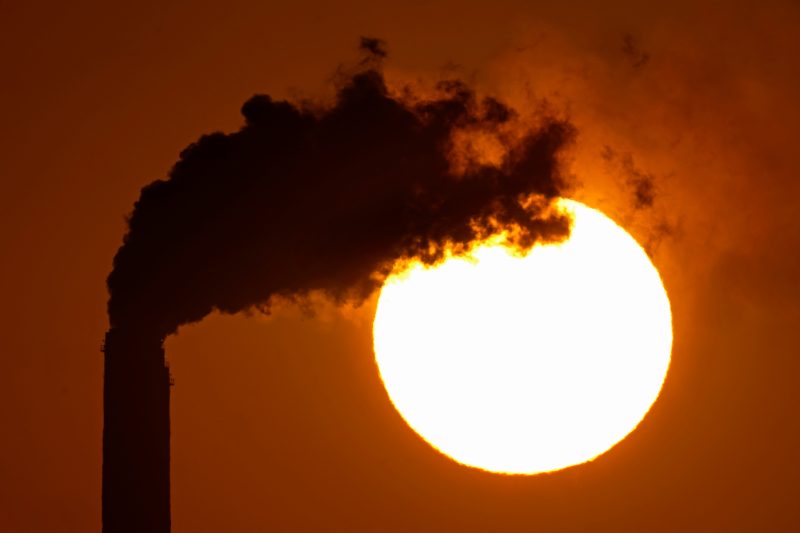
Supreme Court reviews EPA plan to cut pollution that crosses state lines
The Supreme Court on Wednesday is reviewing the Environmental Protection Agency’s effort to cut emissions from power plants and factories to reduce pollution that blows into neighboring states — a federal initiative that environmentalists have said is necessary to protect people, especially children and the elderly, from lung-damaging smog.
Those challenging the effort include three states — Ohio, Indiana and West Virginia — and various industry groups that have asked the high court to put the Biden administration’s plans on hold while they work to defeat the rules in the lower courts. In an unusual move, the justices went a step further than that request, agreeing not only to decide whether to suspend the EPA regulation, but also to consider whether it is reasonable before a lower court has ruled on that question.
Supporters of what’s known as the “good neighbor” rule say there would be real health consequences from even a temporary stay of the regulation.
It expands on an Obama-era rule that required power plants in Midwestern and Appalachian states to clean up their emissions, which the nation’s prevailing west-to-east winds carry across state boundaries.
President Biden’s EPA extended the mandate to cover steel mills, cement factories and other major sources of industrial air pollution. The new limits target nitrogen oxide pollution, a major component of ground-level ozone, or smog, that has been found to worsen asthma, chronic bronchitis and other respiratory illnesses. They are designed to cut emissions of nitrogen dioxide from upwind states by roughly 70,000 tons by summer 2026, which EPA officials estimate could prevent as many as 1,300 premature deaths and reduce hospital and emergency room visits.
Although it was intended to cover 23 states, separate legal challenges in lower courts have prevented the rule from fully taking effect. Today, it is in force in 11 states.
In recent years, the Supreme Court’s conservative majority has taken a skeptical view of federal agency power not specifically granted by Congress. Two years ago, in a blow to the Biden administration’s plans for combating climate change, a divided court limited the EPA’s ability to reduce carbon emissions from power plants. Now, the court is considering a challenge that could curb the agency’s power to address deadly air pollutants that have long been a source of tension between states dependent on coal-generated electricity and their downwind neighbors struggling to reduce smog.
Unlike other cases before the court testing the authority of federal agencies to interpret ambiguous federal statutes, the EPA’s power to set air quality rules is clear under the Clean Air Act. Instead, the justices in this case are asking about the reasonableness of the EPA’s technical, scientific and economic judgments — all of which are well within the agency’s mandate, according to environmental advocates.
The case “represents an even further invasion from the Supreme Court into what have traditionally been considered legislative and executive branch policy judgments,” said Sam Sankar, senior vice president for programs at Earthjustice and a former law clerk to the late Justice Sandra Day O’Connor.
After the plan went into effect last August, a divided panel of the U.S. Court of Appeals for the District of Columbia Circuit denied the upwind states’ request to put the rule on hold while litigation continues. The challengers then asked the Supreme Court to intervene on an emergency basis.
Sankar and other legal observers questioned the court’s decision to schedule argument before a lower court has ruled on the underlying issues in the case and without the usual additional written briefs. According to University of Texas law professor Steve Vladeck, Wednesday’s session at the high court is just the third time since 1971 that the justices have heard arguments based on this type of emergency application.
Industry groups and East Coast states such as New York and Connecticut have a long history of battling over the good neighbor rule in the courts. These downwind states have argued they cannot meet federal clean air standards without tighter controls on the smokestacks in neighboring states.
Critics of the federal plan — among them: coal-fired power plant owners, steel manufacturers and gas pipeline companies — counter that the regulation would force them to install costly technology to capture pollutants before they’re released into the atmosphere. Some industries have claimed the expense would put them out of business. Upwind states challenging the rule have also said that it saddles them with higher enforcement costs and could threaten their electrical grids if power plant operators decide the compliance costs are too high to stay open.
Ohio Attorney General Dave Yost (R) told the justices in a filing that the EPA’s rejection of state plans is an illegal “power grab” by federal regulators.
Environmentalists dismiss these arguments as overblown, noting that many power plants have already installed the necessary pollution controls. Under the rule, other polluting industries have until 2026 to comply.
“Very rarely does it actually happen that the compliance costs are anywhere near what industry predicts,” Sankar said.
The case is Ohio v. EPA.
